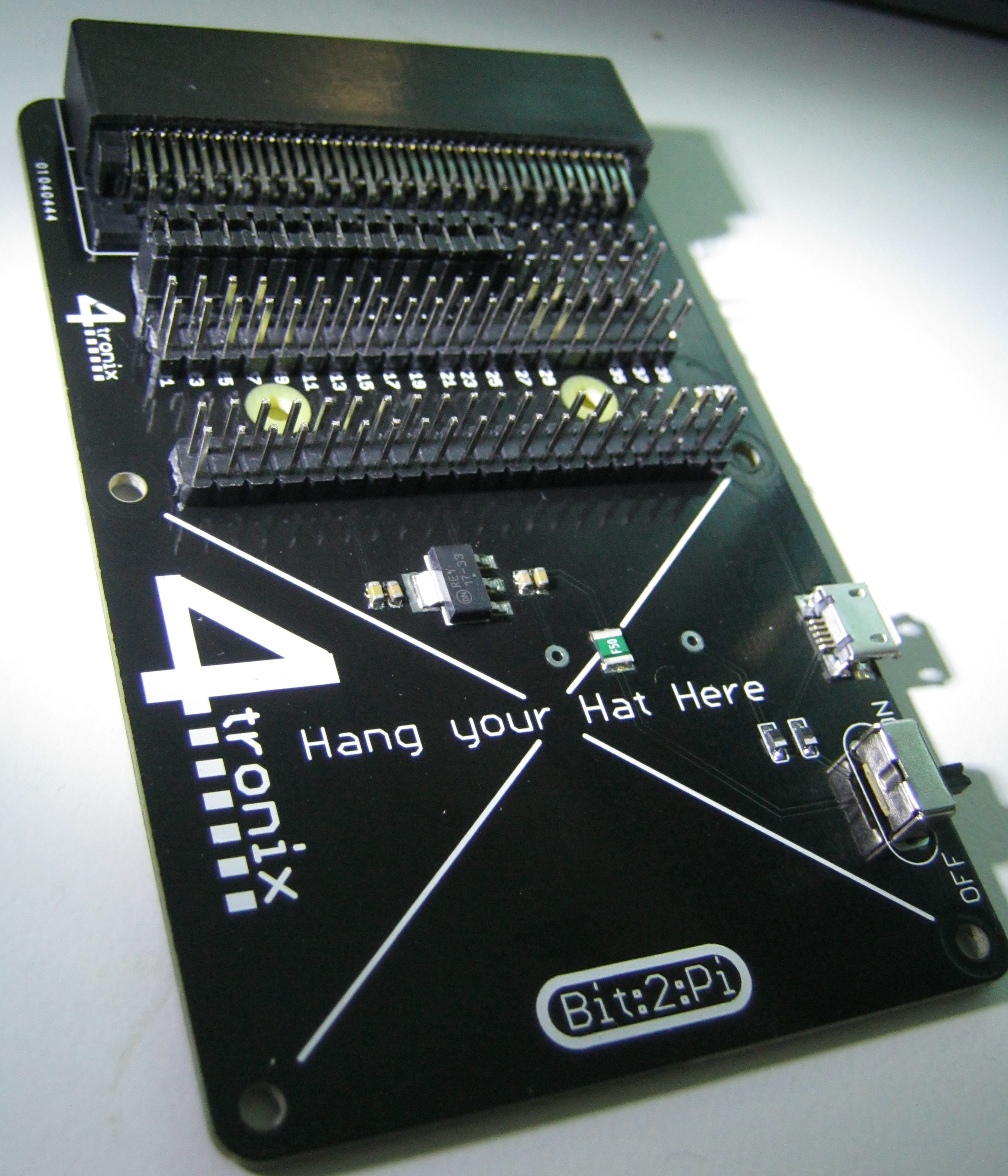micro:bit and the Bit:2:Pi

During a previous experiment in getting the micro:bit to talk to 4tronix Piconzero it was suggested that the 'jumper wire lashed together' micro:bit dev board and Pimoroni Black Hat Hack3r could be replaced by a purpose built board which would allow the micro:bit to talk to Raspberry Pi HATs.
The board..
After a few chats with Gareth at 4tronix on this subject a prototype board dropped through the door one morning and after a few more chats all was quiet. Another package dropped though the letterbox this morning and inside was the final version.
The board has a connector for the micro:bit and a 40 pin GPIO header to connect the HATs. The bank of headers in between allow you to connect micro:bit pins to different GPIO pins.
Power is supplied via the microUSB connector or by battery pack. The micro:bit, if not connected to a computer, can be powered from the same supply via a voltage regulator.
Connections
Connections between the micro:bit and the GPIO header have been mapped as follows:
| Microbit | GPIO (Physical) | GPIO (BCM) |
|---|---|---|
| 0 | 7 | #04 |
| 1 | 11 | #17 |
| 2 | 12 | #18 |
| 5 (A) | 18 | #24 |
| 8 | 13 | #27 |
| 11 (B) | 22 | #25 |
| 12 | 15 | #22 |
| 13 (SCLK) | 13 | SCLK |
| 14 (MISO) | 21 | MISO |
| 15 (MOSI) | 19 | MOSI |
| 16 | 19 | #23 |
| 16 | 19 | #23 |
| 19 (SCL) | 5 | SCL |
| 20 (SDA) | 3 | SDA |
However these may be remapped using the supplied jumpers and connecting the relevant pins on the headers.
Being able to support a certain HAT will depend on how the HAT communicates with the host system. HATs that use I2C for communications should have minimal issues being used.
The PiconZero, Pimoroni EnviroPhat and PiBrella have all been used and found to be working fine.
Where can I get one?
The Bit:2:Pi is available at 4tronix
Kit: £8
Ready Soldered: £12
Battery Pack: £1.50
